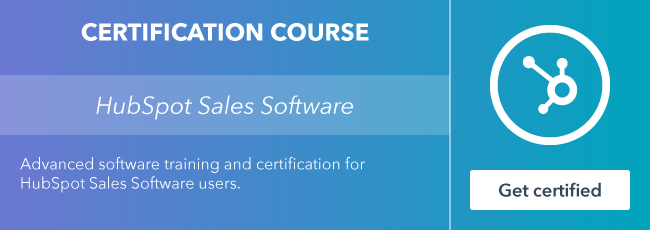What do telecommunications, delivery services, and the inbound methodology all have in common?

Give up?
It's something called "the last mile problem." This is a big deal for companies that provide cable TV, internet access, and landline phones: They can lay huge, underground cables pretty efficiently, but then they have to find a way to run smaller cables from the main line to individual residences. That "last mile" of cable raises huge logistical problems for the company and for the customers. So they end up asking you to take a half-day off work so you can sit around and wait for a surly technician to come drill holes in the walls of your apartment.
In the past decade, this has become a big deal with package delivery. When you order a pack of AA batteries from Amazon, there's a super efficient process that gets the batteries from the shelf in Amazon's warehouse into a box, onto a plane, and delivered to a local distribution hub. But getting your package from there to your house is tough. Once the batteries are on the delivery truck, the driver has to navigate to your address, double park, find your package, walk it to your door, and drop it off.
What Does This Have to Do With Inbound?
If you're using a marketing automation platform, things probably move pretty fast for you in the first half of the inbound methodology. You can efficiently share relevant content to large groups of people, monitor their interactions with it, and track their progress through the buyer's journey. One marketer can handle interactions with thousands of contacts simultaneously, no problem.
But then you hit that last mile. What was all charts and personas and cohorts to the marketer becomes individual leads for a sales rep, and now that rep has to carry each of those leads across the finish line. Just as the postal service has to employ an army of delivery drivers to get Amazon's packages to Amazon's customers, and just as your friendly neighborhood ISP has to send a technician to get your internet service online, your company needs sales reps to turn marketing's leads into customers. And in all three cases, that last mile holds the biggest logistical quandaries, but it also holds the biggest opportunities to increase efficiency.
Navigating the Last Mile
In the HubSpot CRM, you can use deals to track your potential sales. As a sale progresses through that last mile, you move the deal from one stage to the next until it closes. This works best when you customize the deal stages to match your sales process.
I've written previously about figuring out what your deal stages should be, but there are still a few unanswered questions around the number of stages and where the marketing process ends and the sales process begins. Using the last mile problem as context, answering these questions becomes a little easier.
What Should My First Deal Stage Be?
Your deal pipeline represents the last mile of your sales process. It starts where your marketing automation ends. When it comes time to deploy a specific salesperson, you know a lead has entered your sales funnel.
But that isn't necessarily where your deal stages should start. There will occasionally be marketing qualified leads that never turn into sales opportunities simply because they never get around to replying to your sales rep's call and emails.
So rather than dropping every MQL into your first deal stage, your reps should start out tracking new leads using lead status, which is a customizable property for tracking a lead's transition from marketing's jurisdiction to sales'. Deal stages should start as soon as the sales rep has connected with the lead and gotten a commitment to move forward.
This means your first deal stage will be the first commitment your sales team asks leads to make. In many cases, that will be something simple like setting an appointment to start the sales conversation. That small, initial commitment is a big deal: It represents the lead's willingness to start down that last mile of the process.
In short, your sales process starts when you deploy a specific sales rep to help a specific lead, and your first deal stage should identify the moment that lead consents to being helped.
What If We Don't Actually "Deploy Humans"?
If you're an eCommerce shop, 1:1 interaction between your prospects and sales team might not be a regular part of your sales process. In that case, you're going to use deals in a very different way, but you're still going to use them.
It's important to remember that deals serve two purposes: One is to track the progress of individual sales opportunities, which may not be especially relevant in highly transactional sales. The other is to track your revenue as a whole, and that's relevant to every company.
Using the revenue data in closed deals, HubSpot can calculate the ROI of your campaigns and ad spend so you can tell what's generating the most results. That's a vital piece of information when it comes to strategic and budgetary decisions. So even if you live in a 100% automated, online sales world, you'll still want to use deals to track revenue.
Depending on how you manage your online transactions, you can use APIs or workflows to create deals and drop them into the "Closed-Won" column of your pipeline. You might not need any other stages than that. Alternatively, if you need a human to inspect or approve the sale manually, you could create a "Ready to Ding" deal stage and populate the deals there. Then your human can look through the deals and slide them into "Closed-Won" if everything looks good.
What If My Sales Process Is More Complex Than That?
If your sales process is longer than that, you'll need to have multiple stages. Your first stage will be the "consent" I already mentioned (e.g., "Appointment Scheduled"), and your last stages will be "Won" and "Lost," so each deal has a final destination.
That part's easy; it's everything that comes in between that's tricky. Again, I do have a method for figuring out what your deal stages should be, but if one Kyle Jepson blog post is enough for you for one day, let me sum it up in one sentence:
You should have a deal stage for every action a lead takes that moves them significantly closer to becoming your customer.
The key word here is "significantly." If you have five deal stages, you should be significantly more confident that the deals in Stage 3 are going to turn into revenue than you are that the deals in Stage 2 will turn into revenue. Every stage should represent a victory, a veritable hurdle that your sales team has helped their leads overcome.
If your deal stages meet that definition, then you'll get a third benefit from using deals: the ability to forecast revenue. If your deal stages represent real progress in that last-mile journey toward becoming your customer, then the CRM's revenue forecasts will be far more accurate than if you're using deals as a checklist of all the things you want your sales reps to do during the sales process.
What If There Aren't any "Veritable Hurdles" in My Last Mile?
If there aren't celebration-worthy victories sprinkled throughout your sales process, then I'm willing to bet that you actually have a transactional sale. That isn't to say selling your product is simple or easy; it just means that deal stages aren't the right way to be handling your last mile.
In any sales process involving a sales rep, there's going to be a list of things the sales rep needs to make sure the prospect does — signing forms, reading terms of service, generally acknowledging that they know what they're getting into — but tracking these kinds of things with deal stages is cumbersome and confusing.
A better idea would be to capture this information in custom properties (I've written about those here), and then you could use tasks to hold your sales reps accountable to filling in those properties.
Conclusion (er — Last Mile?)
If you've struggled with making sense of deal stages — if the order and number of your deal stages feels arbitrary and doesn't match perfectly to every sale — it might help to rethink the way you're using them.
If you can think of your sales process in terms of the significant, forecast-worthy steps your prospect has to take from the time they enter your sales funnel to the time they leave it, then you'll be able to use deals to represent those steps.
If your sales process doesn't work that way, you might be better off tracking your sales activities another way.
Regardless of what kind of sales process you have, you're going to have to put some serious thought into the the logistics involved. After all, the last mile is the hardest. But if you can come up with a good plan for navigating it, that'll directly benefit your bottom line.










